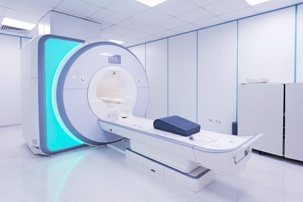 It’s been a month or more since your concussion. Everyone expects you to be back to your regular routine by now. The typical MRI and CT scan ordered by your doctor appear normal. Yet, you know something is wrong. You are still struggling.
It’s been a month or more since your concussion. Everyone expects you to be back to your regular routine by now. The typical MRI and CT scan ordered by your doctor appear normal. Yet, you know something is wrong. You are still struggling.
Quantitative DTI Can Detect Your Brain Injury
Quantitative diffusion tensor imaging, known as quantitative DTI or qDTI, can detect nerve damage in the brain. A qDTI test is an advanced form of magnetic resonance imaging (MRI). Unlike a typical MRI or CT scan, a quantitative DTI looks at how fluid flows through nerve cells and white matter in the brain. If the fluid’s movement is disrupted, that indicates that the nerve is damaged and that part of the brain is injured.
How a qDTI works
In a qDTI test, a more powerful MRI machine with advanced features is used. The brain can be scanned in a specific area or divided into many different regions for a close look at all the nerve cells. That way, an accurate diagnosis can be made. Once the qDTI test is complete, the doctor who ordered your test will receive a report with the test results. Generally, if values come back below .35, there could be a disruption or injury in the brain.
How Quantitative DTI Can Help Your Recovery
You didn’t need the qDTI test to know that you were struggling because of your concussion. However, without the results of a reliable medical test, the lingering effects of your concussion may be challenging to prove. Without medical evidence, your doctors, employer, friends, family, and the insurance company responsible for settling your legal claim may believe that you are completely healed.
A quantitative DTI test changes that. Now you have test results that show how your concussion injury continues to impact your life.
Yet, even with these test results, you should expect the insurance company or the defendant’s lawyer to dispute your injury. Some insurers and attorneys may go as far as to say that quantitative diffusion tensor imaging tests are not accepted in the medical community, and, therefore, should not be considered as evidence. Your brain injury lawyer can argue, however, that qDTIs have been around for a couple of decades, and the technology is now becoming more widely available. Further, qDTIs are forms of MRIs, and MRIs are widely recognized as reliable medical tests. qDTI test results, together with neuropsychological test results and observations from your daily life, can be persuasive evidence and help you get the fair recovery you deserve.
You Deserve Compensation for All Your Concussion Injuries
You are suffering enough from someone else’s negligence. If you continue to suffer memory problems, concentration difficulties, sleep disturbances, dizziness, headaches, nausea, or other concussion consequences, you deserve to make a fair and complete recovery.
The experienced brain injury legal team of Gray and White Law is here to help you get the recovery you deserve. Our staff nurse and brain injury lawyers will:
- Thoroughly investigate your negligence claim
- Gather evidence about your injury, including all medical tests such as a qDTI
- Negotiate with the right defendants and bring your case to court
- Fight for your right to recover past and future medical costs, lost income, out-of-pocket expenses, physical pain, and emotional suffering
You have just one chance to make a fair recovery. Therefore, your recovery must include compensation for all of the subtle, yet significant, effects of your injury. Our team knows what questions to ask, what evidence to gather, and what arguments to make so that our clients get the fair recoveries they deserve.
We are only paid if your case is successful and you recover financial damages. Learn more about how to protect your rights and how we can help you by calling us or starting a live chat with us at your earliest convenience.
Related Links: